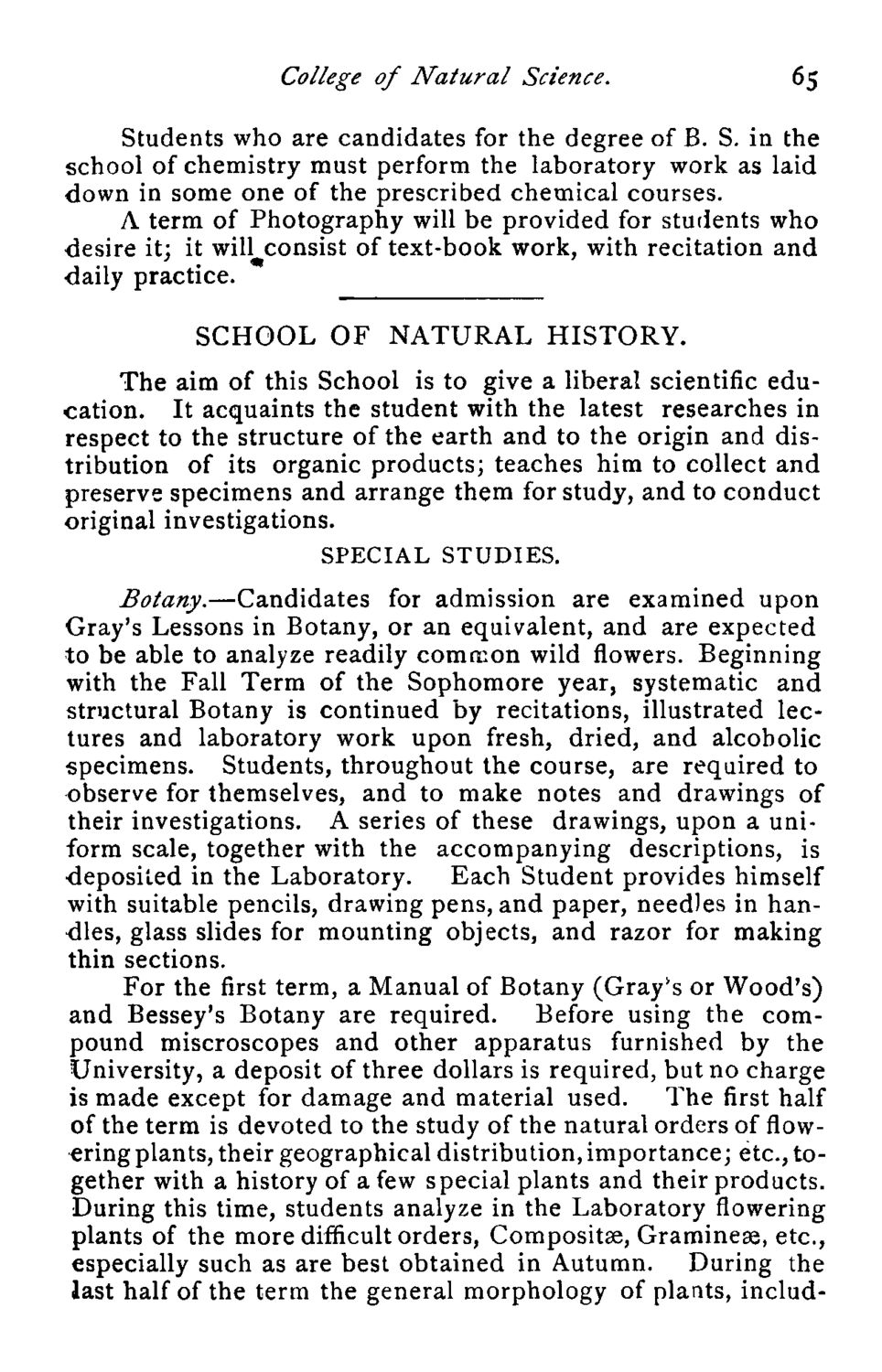| |
| |
Caption: Course Catalog - 1884-1885
This is a reduced-resolution page image for fast online browsing.

EXTRACTED TEXT FROM PAGE:
College of Natural Science. 65 Students who are candidates for the degree of B. S. in the school of chemistry must perform the laboratory work as laid down in some one of the prescribed chemical courses. A term of Photography will be provided for students who desire it; it will^consist of text-book work, with recitation and daily practice. SCHOOL OF NATURAL HISTORY. The aim of this School is to give a liberal scientific education. It acquaints the student with the latest researches in respect to the structure of the earth and to the origin and distribution of its organic products; teaches him to collect and preserve specimens and arrange them for study, and to conduct original investigations. SPECIAL STUDIES. Botany.—Candidates for admission are examined upon Gray's Lessons in Botany, or an equivalent, and are expected to be able to analyze readily common wild flowers. Beginning with the Fall Term of the Sophomore year, systematic and structural Botany is continued by recitations, illustrated lectures and laboratory work upon fresh, dried, and alcoholic specimens. Students, throughout the course, are required to observe for themselves, and to make notes and drawings of their investigations. A series of these drawings, upon a uniform scale, together with the accompanying descriptions, is deposited in the Laboratory. Each Student provides himself with suitable pencils, drawing pens, and paper, needles in handles, glass slides for mounting objects, and razor for making thin sections. For the first term, a Manual of Botany (Gray's or Wood's) and Bessey's Botany are required. Before using the compound miscroscopes and other apparatus furnished by the University, a deposit of three dollars is required, but no charge is made except for damage and material used. The first half of the term is devoted to the study of the natural orders of flowering plants, their geographical distribution, importance; etc., together with a history of a few special plants and their products. During this time, students analyze in the Laboratory flowering plants of the more difficult orders, Compositse, Gramineaa, etc., especially such as are best obtained in Autumn. During the last half of the term the general morphology of plants, includ-
| |